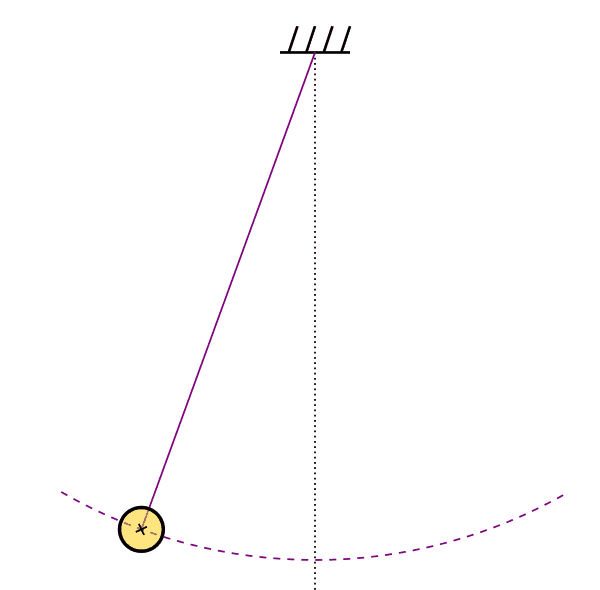In the study of waves and oscillations, two terms you’ll frequently encounter are frequency and period. These two concepts are closely related and help describe the behavior of repetitive events, like sound waves, light waves, and alternating electrical signals. Frequency and Period are used in many fields – from physics and engineering to music and communication.
In this article, we’ll explain what frequency and period are, how they are related, and provide examples to illustrate their connection.
What Is Frequency?
Frequency refers to the number of cycles or repetitions of an event that occur in a specific period of time. In terms of waves, frequency tells us how many times a wave oscillates (or repeats its cycle) per second. Frequency is measured in hertz (Hz), where 1 Hz equals one cycle per second.

For example:
- A frequency of 1 Hz means that the wave completes 1 cycle per second.
- A frequency of 100 Hz means the wave completes 100 cycles per second.
- A frequency of 1,000 Hz (or 1 kHz) means 1,000 cycles per second.
Frequency is an important concept in many areas, such as sound (the pitch of a musical note), radio (how stations transmit signals), and electricity (the frequency of alternating current, or AC).
What Is Period?
The period of a wave or oscillation is the amount of time it takes for one complete cycle to occur. It’s essentially the time per cycle and is the inverse of frequency. Period is measured in seconds (s) or fractions of a second.

For example:
- If a wave has a period of 1 second, it takes 1 second to complete one cycle.
- If the period is 0.01 seconds, the wave completes a cycle every 0.01 seconds.
In simple terms, the period tells us how long it takes for one full oscillation to occur, while frequency tells us how often those oscillations happen in one second.
Relationship Between Frequency and Period
Frequency and period are inversely related. This means that as the frequency of a wave increases, the period decreases, and vice versa. The formula that connects frequency ((f)) and period ((T)) is:
f = 1/T
or
T = 1/f
Where:
- (f) is the frequency (in Hz),
- (T) is the period (in seconds).
In other words, the frequency is the reciprocal of the period, and the period is the reciprocal of the frequency.
Frequency to Period Calculator
Enter the frequency in the calculator below and it will provide the period
Let’s say you have a wave with a frequency of 50 Hz.
Using the calculator, the period of a 50 Hz wave is 0.02 seconds (or 20 milliseconds). This means the wave completes one cycle every 0.02 seconds.
Period to Frequency Calculator
Now, let’s say a wave has a period of 0.01 seconds. Use the calculator to see that the frequency of a wave with a period of 0.01 seconds is 100 Hz. This means the wave completes 100 cycles per second.
Practical Applications of Frequency and Period
Understanding frequency and period is important in a variety of real-world applications:
1. Sound Waves
- The frequency of a sound wave determines its pitch. For example, the musical note A4 has a frequency of 440 Hz, meaning the sound wave oscillates 440 times per second.
- The period tells us how much time it takes for one wave cycle to pass. A 440 Hz sound wave has a period of approximately 2.27 milliseconds.
2. Radio Waves
- Radio stations transmit signals at specific frequencies. For example, an FM station might broadcast at 101.5 MHz (megahertz), meaning the signal oscillates 101.5 million times per second.
- The period of the wave in this case is extremely small, about 9.85 nanoseconds (billionths of a second).
3. Electricity
- In many countries, the frequency of alternating current (AC) electricity is 50 Hz or 60 Hz, depending on the region. For a 60 Hz AC signal, the period is 16.7 ms. This means the direction of current alternates every 16.7 milliseconds.
4. Light Waves
- Light waves also have frequencies and periods, although these values are incredibly high. For example, visible light can have frequencies in the range of 430–770 THz (terahertz), with corresponding periods in the range of 2.33–1.30 femtoseconds (quadrillionths of a second).
Key Differences Between Frequency and Period
| Characteristic | Frequency | Period |
|---|---|---|
| Definition | Number of cycles per second | Time taken for one complete cycle |
| Unit of Measurement | Hertz (Hz) | Seconds (s) |
| Formula | f=1/T | T=1/f |
| Example | 100 Hz means 100 cycles per second | A period of 0.01 seconds means each cycle takes 0.01 seconds |
| Relationship | Inversely related to the period | Inversely related to the frequency |
Summary
- Frequency measures how many cycles of a wave occur in one second and is expressed in hertz (Hz).
- Period measures how long it takes for one complete cycle of a wave and is expressed in seconds (s).
- These two quantities are inversely related: as the frequency increases, the period decreases, and vice versa.
